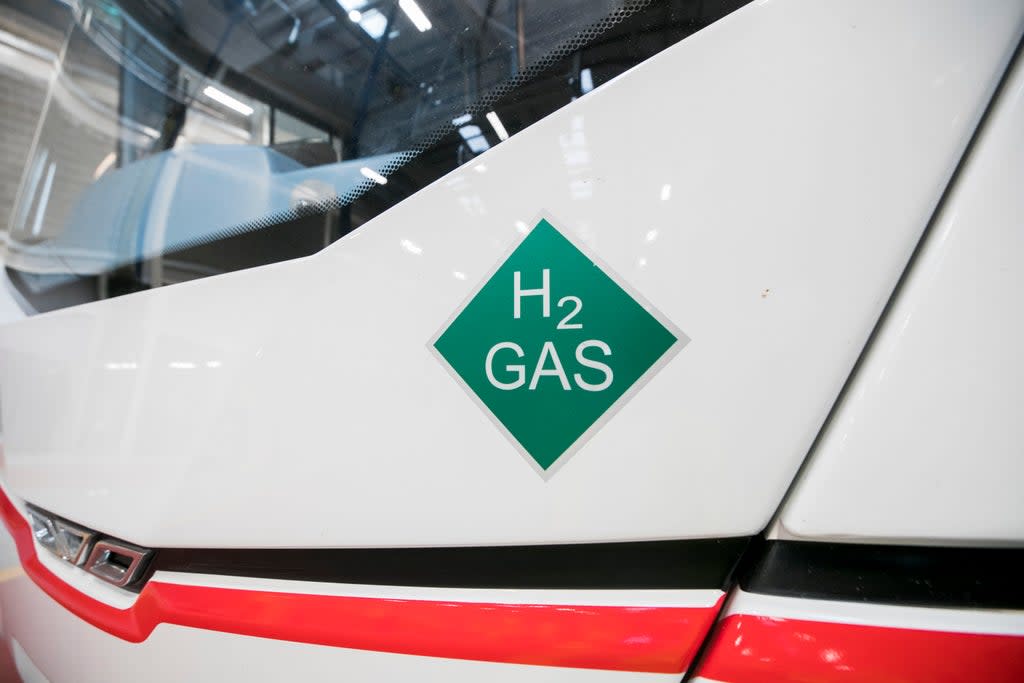The main obstacle to hydrogen becoming the green fuel of the future is cost – but maybe not for long

Hydrogen is essential to get us to our goal of “net zero” emissions. And the hydrogen strategy published recently by the UK government brings us that much closer to using the resource to achieve that target.
Renewable electricity will be a big part of our net zero world, as solar and wind power generation ramps up. The total share of our energy consumption that will come from renewable power in a fully decarbonised system will be well above 50 per cent. But there are some sectors of our economies which will be technically challenging or extremely expensive to fully electrify.
Electricity cannot be used for industrial processes and it is expensive to use to generate the high heat that is often needed for production of materials like glass and ceramics, for instance. Batteries are heavy in proportion to the amount of energy they can store, which makes it hard to imagine direct electrification of long-range ships, aircraft and trucks. And winter heating requires storing energy for months at a time and on a grand scale – a challenge for which electricity doesn’t have a solution. Batteries were never designed to hold energy for long periods of time.
So that’s where we will need a clean molecule to substitute fossil fuels. And “green hydrogen” fits the bill. It is virtually limitless, because you can generate it by passing a (renewable) electrical current through water (H2O) and splitting it into its constituent parts. The fact that this is a scalable process is important because we are going to need a lot of hydrogen: around a quarter of our overall energy needs, by some estimates.
Hydrogen is also relatively easy to transport and store. In many cases, it is possible to retrofit existing natural gas transport pipelines to carry the gas, and it can be cheaply stored in salt caverns where these exist. You can also turn it back into electricity by using fuel cells.
The main hurdle to get hydrogen off the ground is cost. Today, despite the dramatic fall in the renewable power used to make it, the production cost of green hydrogen is unusually high at around $5/kg (£3.6/kg) – or $125/MWh (£90.7/MWh). That compares to around $40/MWh (£29/MWh) for oil, and around $60/MWh (£43.5MWh) for natural gas in Europe.
But the good news is that hydrogen’s costs are set to come down quickly. Snam, the company I run, is part of a coalition called the “Green Hydrogen Catapult” that wants to help more than halve hydrogen costs to $2/kg (£1.5/kg) by 2026. And the Department of Energy in the United States has launched an “Earthshot” to get hydrogen to $1/kg (70p/kg) by the end of the decade.
Provided it could be produced at sufficient scale to spread the cost of transport and storage infrastructure, as well as taking into account the higher efficiency of fuel cells vs combustion and current and rising CO2 costs, at these levels hydrogen would be significantly cheaper than fossil fuels in many applications. This would be a significant opportunity to lower energy costs whilst addressing climate change and and greenhouse gas emissions. It means it could be widely adopted, cutting CO2 emissions in those high energy consuming sectors, without imposing additional costs on the system.
So, what’s needed to get us from the current $5/kg to $2 or even $1? The answer is that we need to make more of it. Electrolysers, the machines used to split water, are still so few and far between. But as producers of these machines see future demand, they will scale up their plants. And, in turn, their suppliers will scale up their own facilities, cutting costs throughout the value chain. Supporting this industry is worthwhile for policymakers as they will not only lower the cost of hydrogen for consumers, but also create new jobs in a growing sector.
The potential economies of scale are staggering: just 25GW of electrolyser production capacity – globally – could bring the cost of hydrogen to $2/kg when combined with cheap renewable power. So the UK’s ambition to get to 5GW of hydrogen-generation capacity by 2030, by itself accounting for a fifth of the overall target, is a big step in the right direction.
Marco Alverà is CEO of Snam and author of The Hydrogen Revolution
Read More
Opinion: Climate tribalism is pointless – we must reach across the political divide
Opinion: 50 years after Greenpeace began, the climate crisis is our biggest threat

 Yahoo News
Yahoo News 
